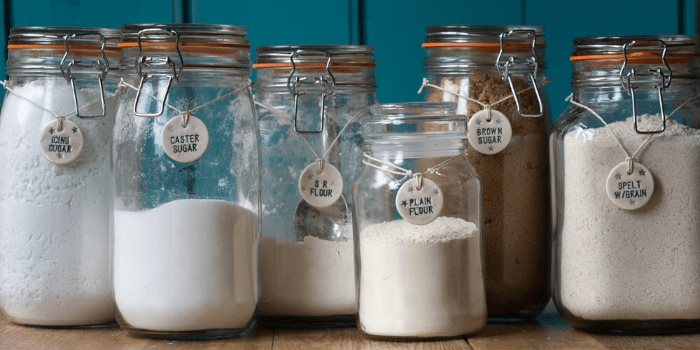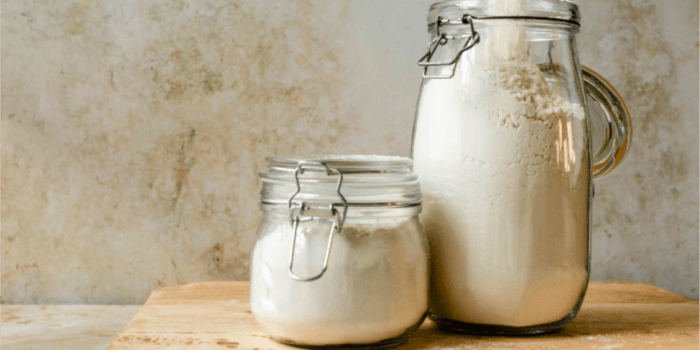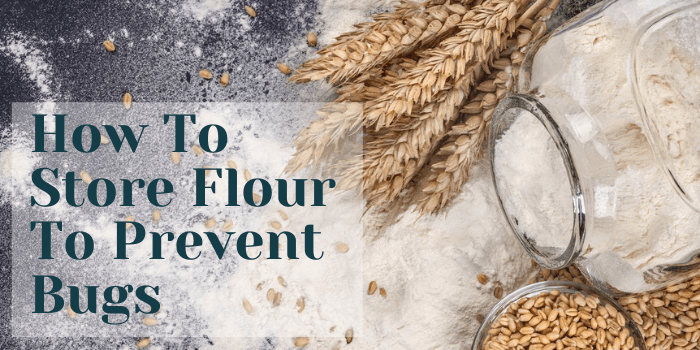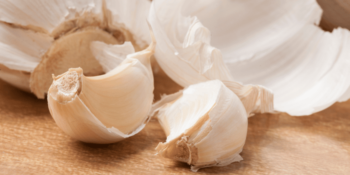No one wants to store their flour in a way that will attract bugs, but it’s hard to know the best way to do this.
It can be really frustrating when you go to get some flour out of your pantry and you see a bunch of bugs crawling around. You don’t want that happening in your kitchen!
In this article, we’ll share our ideas with you on how to store flour to prevent bugs. Plus, we have some great tips for getting rid of any existing bugs in your pantry! 😉
Let’s get into details:
Sugar and flour can be found in almost all kitchens, since they’re the two basic pantry staples, going back to our parents’ or grandparents’ cupboards. These two staples are so popular because one: most recipes call for either flour or sugar or two: because they can last for much longer without perishing.
That leads us to the next point, proper storage. Perhaps you simply buy your bags of sugar or flour and store them as they are, if that works for you, great! However, bear in mind that this could also open you up to pest or flour bug infestations, known as “weevils.”
Not only is the idea of these creatures unpleasant, but this can also lead to other issues like mold and unwanted larvae in your food. Furthermore, improper storage of flour and sugar can also turn it rancid quicker, rendering it unusable.
If you’re unlucky enough to have had a couple of infestations of your own, don’t worry, there’s a solution.
There are affiliate links in this post. They might earn us a small commission at no cost to you.
What Is The Best Packaging?

If you’re planning on using the grains or sugar in a short amount of time after buying, chances are you won’t experience bug infestations or spoiling. Regardless, make sure that the packets don’t have any small holes or tears, or carry a rancid smell. This smell is due to oxidation, when the product is exposed to air or moisture over long periods of time, causing it to go off.
If you’re planning on storing the dry staples for a while, invest in a large, airtight container, preferably made from glass or metal. These containers usually come with strong, protective seals around the edges, preventing any bugs from getting in. Just regular paper or plastic packaging will do very little in protecting your flour from weevils.
Lastly, before storing your dry goods, go over the shelves with a cloth to ensure no crumbs or spills attract unwanted visitors. It’s best if you store them in cool, dark locations, such as a pantry, if possible.
Best Container To Store Flour To Prevent Bugs
As mentioned above, the best type of containers are either made from glass or metal and have tight-fitting lids, such as screw-top ones. These can also be a lot more convenient since they help your goods more organized and prevent spills, especially if you use a flour scoop.
Dry food containers are also a lot more hygienic, and easy to wash too, plus they can really add a nice decor to your kitchen, and you can store practically anything in them. If you want to go all out, you can also attach a label on each one, stating the date of purchase – to keep track of your goods.
Last update on 2024-04-19 / Affiliate links / Images from Amazon Product Advertising API
Where Should I Keep My Flour?
Now that you know the type of container you should store your flour in, let’s talk about the location. While your kitchen cupboard might be the obvious choice, flours and grains actually store pretty well in the fridge or freezer, too. This option is good if you’ve frequently experienced infestations, or you’re very concerned about getting one. This method keeps your flour fresh for up to one or two years.
If you decide to store it in the freezer, make sure to invest in an airtight, freezer container, to avoid any moisture from getting in. Also, this method doesn’t apply to sugar, as storing it in the fridge can cause it to go lumpy.
Otherwise, when keeping dry goods in the cupboard or pantry, make sure it’s away from other strong-smelling produce, such as onions or garlic. The same goes for cleaning products, like soap or washing powder. This way, your flour should last a good six to eight months.
What Are The Bugs That Get Into Flour?
There are many different types of bugs that can get into flour, but the most common ones are millers or grain beetles. These two pests love to eat away at cereal grains and often infest flour mills looking for a warm place to hide during cold months. If you’re lucky enough to live near a wheat field or have visited one recently then there’s a good chance you’ve seen these guys!
If they aren’t removed quickly they will cause an off-flavor in the dough which is why it’s important not only to store your flour properly but also to keep an eye on your supply closely when storing it too long after purchasing so as not to let any insects find their way into your home.
How To Get Rid of Flour Bugs

Flour bugs, or weevils, are attracted to damp, warm places, such as your kitchen cupboards. They are usually drawn in by flour or any other spills, so be sure to keep that area clean at all times. Additionally, they can also arrive home from the store-bought package of flour. You’ll know it’s infested if you notice a brownish surface sitting at the top of the product – these are the eggs laid by female weevils.
If you’re unsure, rub some of the contaminated flour between your fingers, if it has a sort of a minty smell, it’s the bugs. The eggs will hatch in about one to five months’ time, unless thrown out straight away, preferably while wrapped up in something.
How To Keep Flour Fresh

Here are some more tips on how to store flour long term, and prevent future bug infestations from occurring:
- As mentioned above, sticking a label with the purchase date and the name of the products will help you keep track of the flour’s use-by date, while keeping it nice and organized, too.
- Keep in mind that whole-grain produce like spelt, barley, and wheat spoil much faster, lasting only three to six months. Try keeping them in the fridge or freezer to extend their life.
- Generally, most types of flours have a good one to two years in them, but be sure to follow its original date, and make sure the smell doesn’t turn rancid. If it does, toss it out, otherwise, you could get sick if ingested.
- Different types of seeds, nuts, rice, or flax store way better in the freezer, lasting up to a year. If you notice a sour/burnt, they have gone off.
- Try not to buy excessive amounts of flour or sugar if you don’t need it, to prevent spoilage and waste.
Lastly, do not mix new, unopened packets of dry goods with the old ones. This can cause cross-contamination and significantly shorten the lifespan of the new product.
How To Store Flour For Years?
There are a few things to consider when storing flour for an extended period of time. The first is to make sure that the flour is in a moisture-free environment. Secondly, it’s important to store the flour in an airtight container so that it doesn’t become contaminated with any other elements. Finally, you’ll want to keep the flour in a cool, dark place where it won’t be exposed to heat or sunlight.
If you follow these guidelines, your flour should stay fresh and usable for years.
Does Coconut Flour Go Bad?
Coconut flour is a great way to make low-carb, keto bread. It does not go bad because it can be stored for up to two years when tightly sealed in the fridge.
Coconut flour has a high fiber content and absorbs liquid well so it will become soft when wet but still hold together nicely once baked. This makes coconut flour an excellent choice for those who want healthy alternatives to wheat or white flour products without sacrificing taste! Coconut also contains lauric acid which has antiviral properties against many different types of viruses. The fat from coconuts also helps fight bacteria that cause yeast infections among other things! All this makes coconut an ideal alternative to wheat flour.
For more ideas check out our Zero Waste Kitchen blog!

Anna Miller is a content manager at TrashBackwards. She’s passionate about living a zero-waste lifestyle. Anna has been writing about eco-friendly tips for years now, and she’s got some great ideas on how you can go plastic-free! She loves sharing her knowledge about eco-lifestyle with others. Her articles are always witty and insightful! Shoot her a message if you’ve got any questions about how you can start going green.





